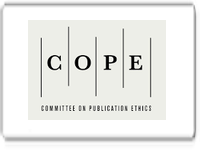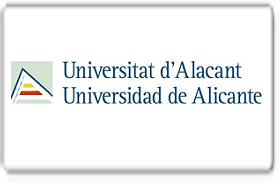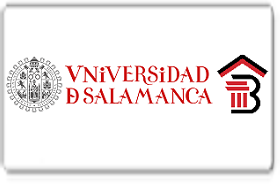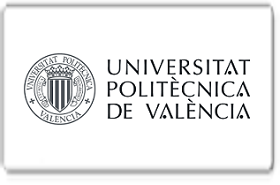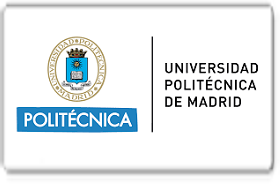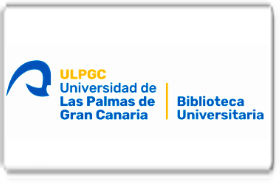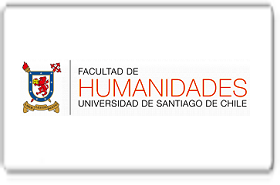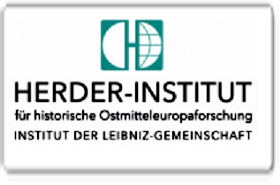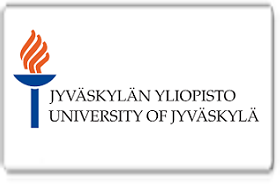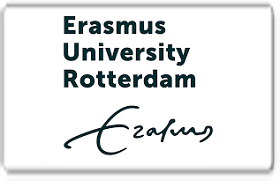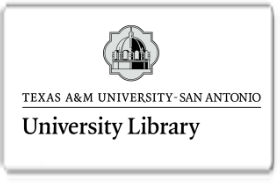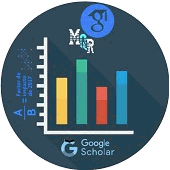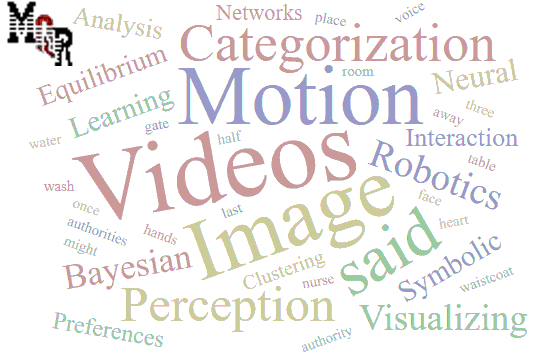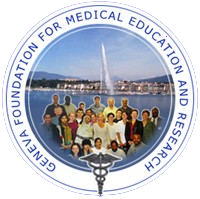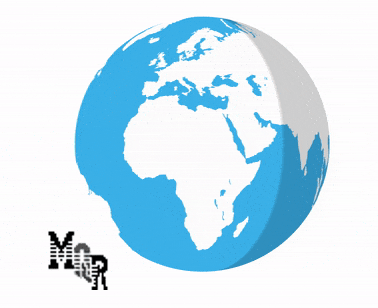Impacto Ambiental Asociado a Factores Antropogénicos: Incidencia en la Economía de las Cuencas hidrográficas
DOI:
https://doi.org/10.56048/MQR20225.8.4.2024.2158-2180Palabras clave:
cuencas hidrográficas; impacto antropogénico; calidad del agua; biodiversidad; políticas públicasResumen
Este estudio examinó el impacto de las actividades humanas en las cuencas hidrográficas y sus efectos en la economía regional, empleando una revisión sistemática de 30 estudios significativos. El propósito fue identificar los factores humanos principales que contribuyen al deterioro de los ecosistemas fluviales y las repercusiones económicas para las comunidades locales. La metodología abarcó la revisión y análisis cualitativo de estudios seleccionados, centrados en los cambios de uso del suelo, la contaminación del agua, y las prácticas agrícolas e industriales. Los resultados indicaron que la transformación de áreas forestales en tierras agrícolas, junto con el uso intensivo de pesticidas y el vertido de aguas residuales industriales, ha generado un deterioro notable en la calidad del agua en varias cuencas de América Latina. Particularmente, se observó que cuencas como la del río Guayas en Ecuador y la del río Magdalena en Colombia presentan altos niveles de contaminación por metales pesados y nutrientes, lo cual impacta tanto en la biodiversidad acuática como en la salud de las poblaciones locales. La discusión enfatizó la necesidad de políticas públicas más efectivas para una gestión integral de las cuencas hidrográficas, incluyendo tecnologías avanzadas de tratamiento de aguas y estrategias de conservación. Las conclusiones sugieren que la cooperación entre sectores resulta esencial para reducir los impactos ambientales y favorecer la sostenibilidad a largo plazo de estos recursos.
Descargas
Métricas
Cited
DOI: 10.56048![]()
Citas
Alves, D. D., Riegel, R. P., de Quevedo, D. M., Osório, D. M. M., da Costa, G. M., do Nascimento, C. A., & Telöken, F. (2018). Seasonal assessment and apportionment of surface water pollution using multivariate statistical methods: Sinos River, southern Brazil. Environmental Monitoring and Assessment, 190(7), 384. https://doi.org/10.1007/s10661-018-6759-3
Amare, G., Dobo, B., & Haile, E. (2023). The Effect of Wet Coffee Processing Plant Effluent on Physicochemical and Bacteriological Quality of Receiving Rivers Used by Local Community: Case of Aroresa District, Sidama, Ethiopia. Environmental Health Insights, 17. https://doi.org/10.1177/11786302231165186
Ansari, Z. A., & Matondkar, S. G. P. (2014). Anthropogenic Activities Including Pollution and Contamination of Coastal Marine Environment. Journal of Ecophysiology and Occupational Health, 14(1–2), 71. https://doi.org/10.15512/joeoh/2014/v14i1-2/50743
Baquerizo, M., Acuña, M., & Solis-Castro, M. (2019). Contamination of river: case Guayas river and its affluent. Manglar, 16(1), 63–70. https://doi.org/10.17268/MANGLAR.2019.009
Benetti, C. J., Alonso, A. I., & Garrido, J. (2007). Comparación de la comunidad de coleópteros acuáticos (Adephaga y Polyphaga) en dos cuencas hidrográficas con distinto grado de acción antropogénica (Pontevedra, NO de España). Limnetica, 26(0213–8409), 115–128. https://doi.org/10.23818/limn.26.10
Bezerra, M. O., Vollmer, D., Acero, N., Marques, M. C., Restrepo, D., Mendoza, E., Coutinho, B., Encomenderos, I., Zuluaga, L., Rodríguez, O., Shaad, K., Hauck, S., González, R., Hernandéz, F., Montelongo, R., Torres, E., & Serrano, L. (2022). Operationalizing Integrated Water Resource Management in Latin America: Insights from Application of the Freshwater Health Index. Environmental Management, 69(4), 815–834. https://doi.org/10.1007/s00267-021-01446-1
Brêda, J. P. L. F., de Paiva, R. C. D., Collischon, W., Bravo, J. M., Siqueira, V. A., & Steinke, E. B. (2020). Climate change impacts on South American water balance from a continental-scale hydrological model driven by CMIP5 projections. Climatic Change, 159(4), 503–522. https://doi.org/10.1007/s10584-020-02667-9
Carvajal, S. A. (2017). Informe Social y Ambiental 2017. https://www.carvajal.com/informes-de-sostenib/informe-social-y-ambiental-2017/
Chappell, M. J., Wittman, H., Bacon, C. M., Ferguson, B. G., Barrios, L. G., Barrios, R. G., Jaffee, D., Lima, J., Méndez, V. E., Morales, H., Soto-Pinto, L., Vandermeer, J., & Perfecto, I. (2013). Food sovereignty: an alternative paradigm for poverty reduction and biodiversity conservation in Latin America. F1000Research, 2, 235. https://doi.org/10.12688/f1000research.2-235.v1
Corredor-Santamaría, W., Torres-Tabares, A., & Velasco-Santamaría, Y. M. (2019). Biochemical and histological alterations in Aequidens metae (Pisces, Cichlidae) and Astyanax gr. bimaculatus (Pisces, Characidae) as indicators of river pollution. Science of The Total Environment, 692, 1234–1241. https://doi.org/10.1016/j.scitotenv.2019.07.187
Deknock, A., De Troyer, N., Houbraken, M., Dominguez-Granda, L., Nolivos, I., Van Echelpoel, W., Forio, M. A. E., Spanoghe, P., & Goethals, P. (2019). Distribution of agricultural pesticides in the freshwater environment of the Guayas river basin (Ecuador). Science of The Total Environment, 646, 996–1008. https://doi.org/10.1016/j.scitotenv.2018.07.185
Echeverría-Sáenz, S., Mena, F., Arias-Andrés, M., Vargas, S., Ruepert, C., Van den Brink, P. J., Castillo, L. E., & Gunnarsson, J. S. (2018). In situ toxicity and ecological risk assessment of agro-pesticide runoff in the Madre de Dios River in Costa Rica. Environmental Science and Pollution Research, 25(14), 13270–13282. https://doi.org/10.1007/s11356-016-7817-4
Escudero Santiago, C. J., Hurtado Martin, J. A., & Vega Sánchez, E. (2023, June). Comparison of Photocatalytic Treatment of Domestic and Slaughterhouse Wastewater. https://doi.org/10.11159/rtese23.108
Esquinca, F., Escobar, J., Hernández, A., Sánchez, G., & Suárez, H. (2002). ESTUDIOS DE CARACTERIZACIÓN Y GENERACIÓN DE RESIDUOS SÓLIDOS MUNICIPALES DE 5 LOCALIDADES DE LA COSTA DEL ESTADO DE CHIAPAS. - PDF Descargar libre. https://docplayer.es/16986385-Estudios-de-caracterizacion-y-generacion-de-residuos-solidos-municipales-de-5-localidades-de-la-costa-del-estado-de-chiapas.html
Fagundes, H. O., Fan, F. M., Paiva, R. C. D., Siqueira, V. A., Buarque, D. C., Kornowski, L. W., Laipelt, L., & Collischonn, W. (2021). Sediment Flows in South America Supported by Daily Hydrologic‐Hydrodynamic Modeling. Water Resources Research, 57(2). https://doi.org/10.1029/2020WR027884
Folz, W. E. (1957). THE ECONOMIC DYNAMICS OF RIVER BASIN DEVELOPMENT.
Galvis, A., Jaramillo, M. F., van der Steen, P., & Gijzen, H. J. (2018). Financial aspects of reclaimed wastewater irrigation in three sugarcane production areas in the Upper Cauca river Basin, Colombia. Agricultural Water Management, 209, 102–110. https://doi.org/10.1016/j.agwat.2018.07.019
Galvis Castaño, A. (2019). Integrated pollution prevention and control for the municipal water cycle in a river basin context: validation of the three-step strategic approach [Wageningen University]. https://doi.org/10.18174/475836
García-Ávila, F., Jiménez-Ordóñez, M., Torres-Sánchez, J., Iglesias-Abad, S., Cabello Torres, R., & Zhindón-Arévalo, C. (2022). Evaluation of the impact of anthropogenic activities on surface water quality using a water quality index and environmental assessment. Journal of Water and Land Development, 58–67. https://doi.org/10.24425/jwld.2022.140780
González Marañón, A., Palacios Mulgado, I., & Ábalos Rodríguez, A. (2020). Impacto ambiental del vertido de residuales en la cuenca hidrográfica Guaos-Gascón de Santiago de Cuba. Revista Cubana de Química, 32, 154–171.
Mao, Y., Liu, Y., Li, H., He, Q., Ai, H., Gu, W., & Yang, G. (2019). Distinct responses of planktonic and sedimentary bacterial communities to anthropogenic activities: Case study of a tributary of the Three Gorges Reservoir, China. Science of The Total Environment, 682, 324–332. https://doi.org/10.1016/j.scitotenv.2019.05.172
Mello, K. de, Valente, R. A., Randhir, T. O., & Vettorazzi, C. A. (2018). Impacts of tropical forest cover on water quality in agricultural watersheds in southeastern Brazil. Ecological Indicators, 93, 1293–1301. https://doi.org/10.1016/j.ecolind.2018.06.030
Paz Cardona, A. (2019, December 5). La salud de los ríos reflejada en el impacto que causan las actividades humanas. Mongabay. https://es.mongabay.com/2019/12/conservacion-de-rios-en-latinoamerica-relacion-con-actividades-humanas/
Pereira de Morais, T., Barreto, L. S., de Souza, T. L., Pozzan, R., Vargas, D. Á. R., Yamamoto, F. Y., Prodocimo, M. M., Neto, F. F., Randi, M. A. F., & Ribeiro, C. A. de O. (2024). Assessing the pollution and ecotoxicological status of the Iguaçu River, southern Brazil: A review. Integrated Environmental Assessment and Management, 20(5), 1280–1305. https://doi.org/10.1002/ieam.4865
Preisner, M. (2020). Surface Water Pollution by Untreated Municipal Wastewater Discharge Due to a Sewer Failure. Environmental Processes, 7(3), 767–780. https://doi.org/10.1007/s40710-020-00452-5
Puppala, H., Peddinti, P. R. T., Tamvada, J. P., Ahuja, J., & Kim, B. (2023). Barriers to the adoption of new technologies in rural areas: The case of unmanned aerial vehicles for precision agriculture in India. Technology in Society, 74, 102335. https://doi.org/10.1016/j.techsoc.2023.102335
Rodríguez Barrientos, F. (2006). Cuencas Hidrográficas, Descentralización y Desarrollo Regional Participativo. Revista de Las Sedes Regionales, VII(12), 113–125. http://www.redalyc.org/articulo.oa?id=66612867008
Rodríguez, C., García, B., Pinto, C., Sánchez, R., Serrano, J., & Leiva, E. (2022). Water Context in Latin America and the Caribbean: Distribution, Regulations and Prospects for Water Reuse and Reclamation. Water, 14(21), 3589. https://doi.org/10.3390/w14213589
Satgé, F., Hussain, Y., Xavier, A., Zolá, R. P., Salles, L., Timouk, F., Seyler, F., Garnier, J., Frappart, F., & Bonnet, M.-P. (2019). Unraveling the impacts of droughts and agricultural intensification on the Altiplano water resources. Agricultural and Forest Meteorology, 279, 107710. https://doi.org/10.1016/j.agrformet.2019.107710
Seymenov, K. (2022). An example of the adverse impacts of various anthropogenic activities on aquatic bodies: Water quality assessment of the Provadiyska river (Northeastern Bulgaria). Geographica Pannonica, 26(2), 142–151. https://doi.org/10.5937/gp26-38196
Shamir, I., Rodríguez, R., Solano, V. S., Salazar, V., Dirección, S., & Mx, V. (2018). La acuicultura frente a los impactos de la actividad agrícola en la calidad de los servicios ambientales de la cuenca del río mayo. Una propuesta para su abordaje desde la economía ecológica. Estudios Sociales (Hermosillo, Son.), 28(51), 0–0. https://doi.org/10.24836/ES.V28I51.507
Srinivas, R., & Singh, A. P. (2018). Impact assessment of industrial wastewater discharge in a river basin using interval-valued fuzzy group decision-making and spatial approach. Environment, Development and Sustainability, 20(5), 2373–2397. https://doi.org/10.1007/s10668-017-9994-9
Swinton, S. M., Escobar, G., & Reardon, T. (2003). Poverty and Environment in Latin America: Concepts, Evidence and Policy Implications. World Development, 31(11), 1865–1872. https://doi.org/10.1016/j.worlddev.2003.06.006
Torremorell, A., Hegoburu, C., Brandimarte, A. L., Rodrigues, E. H. C., Pompêo, M., da Silva, S. C., Moschini-Carlos, V., Caputo, L., Fierro, P., Mojica, J. I., Matta, Á. L. P., Donato, J. C., Jiménez-Pardo, P., Molinero, J., Ríos-Touma, B., Goyenola, G., Iglesias, C., López-Rodríguez, A., Meerhoff, M., … Navarro, E. (2021). Current and future threats for ecological quality management of South American freshwater ecosystems. Inland Waters, 11(2), 125–140. https://doi.org/10.1080/20442041.2019.1608115
Villanueva, M. C., & Esquivel, R. P. (2012). Impactos antropogénicos en la calidad del agua del río Cunas. Apuntes de Ciencia & Sociedad, 2(2), 130–137. https://doi.org/10.18259/ACS.2012015
Villarroya, A., Barros, A. C., & Kiesecker, J. (2014). Policy Development for Environmental Licensing and Biodiversity Offsets in Latin America. PLoS ONE, 9(9), e107144. https://doi.org/10.1371/journal.pone.0107144
Vinueza, D., Ochoa-Herrera, V., Maurice, L., Tamayo, E., Mejía, L., Tejera, E., & Machado, A. (2021). Determining the microbial and chemical contamination in Ecuador’s main rivers. Scientific Reports, 11(1), 17640. https://doi.org/10.1038/s41598-021-96926-z
Walteros, J. M., & Ramírez, A. (2020). Urban streams in Latin America: Current conditions and research needs. Revista de Biología Tropical, 68(S2), S13–S28. https://doi.org/10.15517/rbt.v68iS2.44330
Wang, F., & Hao, R. J. (2020). Environmental Pollution in Pearl River Delta, China: Status and Potential Effects. ISEIS Journal of Environmental Informatics Letters, 3(2), 110–123. https://doi.org/10.3808/jeil.202000033
Williams, W. D. (2001). Anthropogenic salinisation of inland waters. Hydrobiologia, 466(1/3), 329–337. https://doi.org/10.1023/A:1014598509028
You, Y., Xie, Z., Jia, B., Wang, Y., Wang, L., Li, R., Yan, H., Tian, Y., & Chen, S. (2023). Impacts of anthropogenic water regulation on global riverine dissolved organic carbon transport. Earth System Dynamics, 14(5), 897–914. https://doi.org/10.5194/esd-14-897-2023
Publicado
Cómo citar
Número
Sección
Categorías
Licencia

Esta obra está bajo una licencia internacional Creative Commons Atribución 4.0.
Los autores se comprometen a respetar la información académica de otros autores, y a ceder los derechos de autor a la Revista MQRInvestigar, para que el artículo pueda ser editado, publicado y distribuido. El contenido de los artículos científicos y de las publicaciones que aparecen en la revista es responsabilidad exclusiva de sus autores. La distribución de los artículos publicados se realiza bajo una licencia 


















